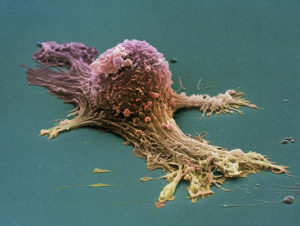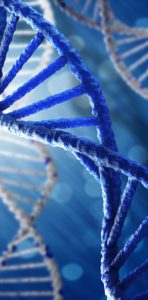Cancer is one of the scariest words in the English language and when we are afraid we tend to become irrational – even otherwise intelligent people. That is why there are more quackery around cancer treatments than any other disease. Cancer is likely second only to death itself in terms of stuff that frighten people. And just like there are myths and charlatans exploiting our fear of death, there is an entire voodoo industry to exploit the fear of cancer.
While complimentary and alternative therapy for cancer is a universal phenomenon (I often see patients who also take some form of alternative medicine for cancer here in USA too), it is of a completely different and dangerous magnitude in India. I have seen this first hand as I frequently get medical records of cancer patients for second opinion from India, and it is very troubling to see the number of poor patients who continues to be exploited by peddlers of alternative medicine in India.
As a recent example, from my visit to Kerala in November 2017, one of the patients who came to see me for a second opinion was someone I knew all the way from my childhood days who was unfortunately diagnosed with bladder cancer around 6 months ago. He saw an Oncologist and a Urologist at a reputed hospital in Kozhikode, who both appropriately advised immediate surgery to take care of his early stage bladder cancer, which could have been curative. Instead he decided to forego modern medicine and sought treatment from an alternative medicine provider who claimed he could cure this cancer with some “lehyam” and other quackery. As symptoms continued to worsen patient went back to his original doctors, who repeated a CT scan. He brought with him his CT scans, and I reviewed his old and new scans, and unfortunately his disease had now progressed significantly and had become inoperable. And sadly, patient also had gone in to renal failure due to the enlarging tumor blocking his ureters. While we are constantly bombarded in social media on the extremely rare instances of advanced cancers “being cured” with alternative medicine, one never sees the much common occurrences like the case above, where relying on alternative medicine and delaying modern medical treatment become deadly.
The number of claims of alternative medical miracles in cancer is astounding. As discussed above, the more frightening an issue is, the more willing people will be to believe in fairy tales and subscribe to magical thinking. What is unfortunate is that, unlike in the past, effective cancer treatments are now widely available, and the key to a good outcome is early treatment. And many a times as in the case above, the delay in early treatment while patient tries out various unproven alternative medicine could change an early treatable disease to an advanced and incurable death sentence.
Quacks and promoters of alternative medicine comes in various forms. Some are “professional peddlers” who promote their wares with benign sounding words (like “organic”, “plant derived” and so on. A brief note here – just because some thing is derived from plant does not make it automatically healthy – nicotine, the commonest cancer-causing agent in the world, is an “absolutely organic and plant derived” product!) These professional peddlers are very adept at marketing and experts at using social media. Unfortunately, people are much keener on reading and disseminating extra ordinary claims and conspiracy theories than what is truly scientific and rational, so these charlatans have become very successful with the wide spread use of social media.
Another and even more effective form of peddlers are those who have been the very fortunate quacks who happened to come across a case of spontaneous regression of cancer. These quacks have other people, often cancer patients or relatives, vouching for their remarkable recovery. Many of these are again totally fabricated stories, but some time these could be real patients and real stories. So how would one explain those remarkable stories, assuming the story is real? Can a patient with advanced cancer who have failed all therapies can suddenly become cancer free?
Here is how to explain this – as briefly noted, there is a well-known entity in cancer biology called “spontaneous regression of cancer”. This is the disappearance of cancer without a satisfactory explanation. There is an entire body of literature on this rare but well described topic. And with a better understanding of cancer biology, especially with advances in cancer immunology, this is no longer a “mysterious” or “miraculous” subject but come totally within the realm of known cancer biology.
The patron saint of cancer patients is St Peregrine, OSM (1265-1345), a 14th century priest whose cancerous leg became ulcerated and festered for years and was, according to Christian legend, healed by Divine intervention the night before he was scheduled to undergo amputation.1,2 Case reports like this fits the general rubric of “spontaneous regression.”3
Discounting these unique events may be the easiest course of action but it is unscientific, as medical historian and hematologist Dr Jocalyn Duffin noted in an analysis of Vatican archives in her book, “Medical Miracles: Doctors, Saints, and Healing in the Modern World”.4 Her interest in this subject started when Dr Duffin was sent pathology slides for interpretation from the Vatican regarding a patient diagnosed with acute myeloblastic leukemia, who was supposed to have been cured “miraculously”. The source of the slides was unknown to her at first, though more than 30 years later the patient is alive after initially failing standard therapy.4,5
Critical analysis of cases of spontaneous regression by sober and scientific observers dates back more than a century to physicians like Dr William Coley, Dr G.L. Rohdenburg in 1918, landmark studies by Drs J.J. and J.H. Morton in 1953, and the widely cited review by Drs T. Everson and W. Cole in 1956.6-8 The latter study defined the modern version of spontaneous regression of cancer as: “the partial or complete disappearance of a malignant tumor in the absence of all treatment, or in the presence of therapy which is considered inadequate to exert a significant influence on neoplastic disease.”
Medical literature is now filled with observations of biopsy-confirmed malignancies with computerized tomography (CT) scans or magnetic resonance images (MRIs) showing widespread disease that spontaneously regresses, which encompasses nearly every cancer type and histology. Examples include: acute myelocytic leukemia, chronic lymphocytic leukemia, Hodgkin lymphoma, non-Hodgkin lymphoma, breast cancer, non–small cell and small cell lung cancer, testicular cancer, prostate cancer, cervical cancer, hepatocellular cancer, colon cancer, Merkel cell carcinoma, sarcoma, melanoma, neuroblastoma, astrocytoma, and renal cell carcinoma.9-26
The mechanisms most-often implicated in driving the spontaneous regression of cancer are thought to be mediated by immune system activation (or reactivation). Sometimes the driving force is an acute intercurrent bacterial or viral infection. Initiated by the work of Dr Lloyd Old, the founder of modern cancer immunology, the US Food and Drug Administration (FDA) in 1990 approved the first bacterial immunotherapy, Bacillus Calmette-Guerin (BCG), for in situ bladder cancer. More recently the FDA approved T-Vec [talimogene laherparepvec], a viral vaccine used to evoke an immune response in patients with advanced melanoma.27-29
The development of other viral and bacterial vectors is an active area of new drug development, with further success anticipated.30,31 The recent approval of checkpoint inhibitors against an array of cancers and chimeric antigen receptor (CAR)-T cell therapy are testimonies to the power of the immune system, when it awakes from its slumber, to simulate a process historically regarded as “miraculous.”32,33
The immuno-editing theory proposed by Drs Robert Schreiber, Mark Smyth, and Lloyd Old has helped to refine medical understanding of spontaneous regression, which may be seen as the interplay of cancer undergoing incomplete elimination, equilibrium, and escape.34 Under ideal conditions the innate and adaptive elements of the immune system work in concert to eliminate the cancer (often imperfectly) with regulatory (CD4+) and cytotoxic (CD8+) T cells, dendritic (or antigen presenting cells), natural killer (NK) cells, and macrophages along with a host of immune-activating secreted proteins such as interferon gamma, interleukin 12, and tumor necrosis factor (TNF) all working in harmony. Spontaneous regression may in some cases be a manifestation of this dynamic process, and immunoediting fits well into observations that some cancers that undergo spontaneous regression recur, sometimes years later.
Another example of this phenomenon can be seen with the so-called abscopal (or out-of-field) effects of radiation therapy, which causes the immune system to mount a systemic response to distant metastases.35
I expect that in the future, as our understanding of cancer immunity matures, the fascinating phenomenon of spontaneous regression will help guide us towards developing safer and even more effective drugs. What is remarkable is that, these rare cases of “spontaneous regression of cancer”, once ascribed to miraculous intervention or unproven “herbal” and other remedies, now have a very scientific explanation. Unfortunately, how this plays out in the real world is however different; a patient with an advanced malignancy who was fortunate to have such a case of spontaneous remission may end up with a lucky quack, who claims full credit for this rare natural phenomenon; and the news spread like wild fire in the social media jungle; prompting a deluge of desperate patients flocking to get this “magical herb”, while the herb had nothing to do with the spontaneous remission. And while a sole case of spontaneous remission is broadcast through out the world, millions of more lives are cut short trying these unproven therapies.
References
- Pack GT. St. Peregrine, O.S.M.–the patron saint of cancer patients. CA Cancer J Clin. 1967;17(4):181-2.
- Jackson R. Saint Peregrine, O.S.M.–the patron saint of cancer patients. Can Med Assoc J. 1974; 111(8):824-7.
- Krone B, Kölmel KF, Grange JM. The biography of immune system and the control of cancer: from St Peregrine to contemporary vaccination strategies. BMC Cancer. 2014;14:595. doi: 10.1186/1471-2407-14-595
- Duffin J. Medical Miracles: Doctors, Saints, and Healing in the Modern World. Oxford: 2008.
- Pukel C. Immunotherapy in the twentieth century: William Coley and Lloyd J. Old. Cancer Therapy Advisor website. Published March 15, 2017.
- Rohdenburg GL. Fluctuations of the growth energy of malignant tumors in man with especial reference to spontaneous reference. Cancer Res. 1918;(3)2:193-225.
- Morton JJ, Morton JH. Cancer as a chronic disease. Ann Surg. 1953;(137):683.
- Everson TC, Cole WH. Spontaneous regression of cancer: preliminary report. Ann Surg. 1956;144(3):366-80.
- Barrett R, Morash B, Roback D, et al. FISH identifies a KAT6A/CREBBP fusion caused by a cryptic insertional t(8;16) in a case of a spontaneously remitting congenital acute myeloid leukemia with normal karyotype. Pediatr Blood Cancer. 2017;64(8). doi: 10.1002/pbc.26450
- D’Arena G, Guariglia R, Pietrantuono G, et al. More on spontaneous regression of chronic lymphocytic leukemia: two new cases and potential role of lamivudine in a further patient with advanced disease and hepatitis B virus infection. Leuk Lymphoma. 2014:55(8):1955-7. doi: 10.3109/10428194.2013.858151
- Udupa K, Philip A, Rajendranath R, Sagar T, Majhi U. Spontaneous regression of primary progressive Hodgkin’s lymphoma in a pediatric patient: a case report and review of literature. Hematol Oncol Stem Cell Ther. 2013;6(3-4):112-6. doi: 10.1016/j.hermonc.2013.06.004
- Takahashi T, Ikejiri F, Takami S, et al. Spontaneous regression of intravascular large b-cell lymphoma and apoptosis of lymphoma cells: a case report. J Clin Exp Hematop. 2015;55(3):151-6. doi: 10.3960/jstrt.55.151
- Ito E, Nakano S, Otsuka M, et al. Spontaneous breast cancer remission: a case report. Int J Surg Case Rep. 2016;25:132-6. doi: 10.1016/j.ijscr.2016.06.017
- Nakamura Y, Noguchi Y, Satoh, E et al. Spontaneous remission of a non-small cell lung cancer possibly caused by anti-NY-ESO-1 immunity. Lung Cancer. 2009:65(1):119-22. doi: 10.1016/j.lungcan.2008.12.020
- Kitai H, Sakakibara-Konishi J, Oizumi S, et al. Spontaneous regression of small cell lung cancer combined with cancer associated retinopathy. Lung Cancer. 2015;87(1):73-6. doi: 10.1016/j.lung ca.2014.10.015
- Balzer BL, Ulbright TM. Spontaneous regression of testicular germ cell tumors: an analysis of 42 cases. Am J Surg Path. 2006;30(7):858-65.
- Lee T, Guo Y, Vij S, Bansal R, Wong NC, Shayegan B. Case: spontaneous regression of post-radical prostatectomy prostate-specific antigen elevation without adjuvant therapy in a patient with lymph node metastasis. Can Urol Assoc J. 2017;11(7):E315-7. http://dx.doi.org/10.5489/cuaj.4324
- Katano A, Takenaka R, Okuma K, Yamashita H, Nakagawa K. Repeated episodes of spontaneous regression/progression of cervical adenocarcinoma after adjuvant chemoradiation therapy: a case report. J Med Case Rep. 2015;9:114.
- Parks AL, McWhirter RM, Evason K, Kelley RK. Cases of spontaneous tumor regression in hepatobiliary cancers: implications for immunotherapy? J Gastrointest Cancer. 2015;46(2):161-5. doi: 10.1007/s12029-015-9690-7
- Chida K, Nakanishi K, Shomura H, et al. Spontaneous regression of transverse colon cancer: a case report. Surg Case Rep. 2017;3:65. doi: 10.1186/s40792-017-0341-z
- Pang C, Sharma D, Sankar T. Spontaneous regression of Merkel cell carcinoma: a case report and review of the literature. Int J Surg Case Rep. 2015;7C104-8. doi: 10.1016/j.ijscr.2014.11.027
- Bonvalot S, Ternes N, Fiore M, et al. Spontaneous regression of primary abdominal wall desmoid tumors: more common than previously thought. Ann Surg Oncol. 2013;20(13);4096-102. doi: 10.1245/s10434-013-3197-x
- Miller CV, Cook IS, Jayaramachandran R, Tyers AG. Spontaneous regression of a conjunctival malignant melanoma. Orbit. 2014;33(2);139-41. doi: 10. 3109/01676830.2013.851708.
- Diede SJ. Spontaneous regression of metastatic cancer: learning from neuroblastoma. Nat Rev Cancer. 2014;14(2):71-2 doi: 10.1038/nrc3656
- Buder T, Deutsch A, Klink B, Voss-Bohme A. Model-based evaluation of spontaneous tumor regression in pilocytic astrocytoma. PLoS Comput Biol. 2015;11(12):e1004662. doi: 10.1371/journal.pcbi.1004662
- Murphy KA, James BR, Guan Y, Torry DS, Wilber A, Griffith TS. Exploiting natural anti-tumor immunity for metastatic renal cell carcinoma. Hum Vaccin Immunother. 2015;11(7):1612–16.
- Kucerova P, Cervinkova M. Spontaneous regression of tumour and the role of microbial infection – possibilities for cancer treatment. Anticancer Drugs. 2016;27(4):269-277.
- Jhawar SR, Thandoni A, Bommareddy PK, et al. Oncolytic viruses-natural and genetically engineered cancer immunotherapies. Front Oncol. 2017;7:202. doi: 10.3389/fonc.2017.00202
- Corrigan PA, Beaulieu C, Patel RB, Lowe DK. Talimogene laherparepvec: an oncolytic virus therapy for melanoma. Ann Pharmacother. 2017:51(6):675-81. doi: 10.1177/1060028017702654
- Lee CH. Engineering bacteria toward tumor targeting for cancer treatment: current state and perspectives. Appl Microbiol Biotechnol. 2012;93(2):517-23. doi: 10. 1007/s00253-011-3695-3
- Howells A, Marelli G, Lemoine NR, Wang Y. Oncolytic viruses-interaction of virus and tumor cells in the battle to eliminate cancer. Front Oncol. 2017;7:195. doi: 10.3389/fonc.2017.00195
- Geng Q, Jiao P, Jin P, Su G, Dong J, Yan B. PD-1/PD-L1 inhibitors for immuno-oncology: from antibodies to small molecules. Curr Pharm Des. 2017 Oct 4. doi: 10.2174/1381612823666171004120152 [Epub ahead of print]
- Wilkins O, Keeler AM, Flotte TR. CAR T-cell therapy: progress and prospects. Hum Gene Ther Methods. 2017;28(2):61-6. doi: 10.1089/hgtb.2016.153
- Schreiber RD, Old LJ, Smyth MJ. Cancer Immunoediting: integrating immunity’s roles in cancer suppression and promotion. Science. 2011;331(6024):1565-70. doi: 10.1126/science.1203486
- Cong Y, Shen G, Wu S, Hao R. Abscopal regression following SABR for non-small-cell-lung cancer: a case report. Cancer Biol Ther. 2017;18(1):1-3. doi: 10.1080/15384047.2016.1264541




